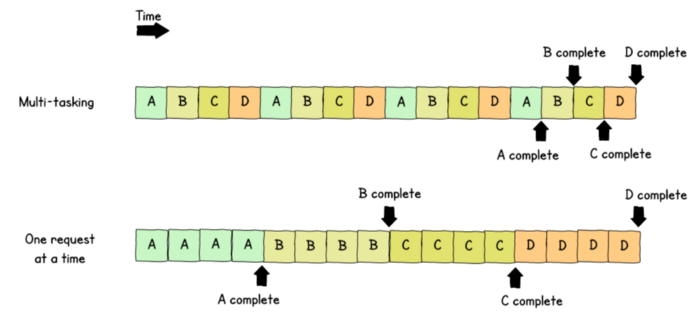“too much WIP” means too many things being worked on at the same time
WIP refers to “work-in-process”, that is how many things are being processed or worked on at the same time.
“Too much WIP” refers to having too many tasks / Stories / Initiatives / Bets being worked on at the same time. This applies at the individual, team, department, and company-level.
“too much WIP” is a problem because it makes things take longer
“too much WIP” makes things take longer because of two associated effects: overburdening and multitasking.
When there is too much WIP, people will tend to feel overburdened. This leads to lower engagement and mistakes.
Overburden is known as “muri” in Lean / TPS.
When there is too much WIP, people will tend to multitask. Multitasking will lead to everything taking longer to complete.

Why does “too much WIP” happen?
I generally suspect two main contributing factors for why “too much WIP” happens: lack of strategy, overemphasis on utilisation.
Too much WIP is a lack of focus; a lack of focus reflects a lack of strategy; a lack of strategy reflects incoherent problem-solving (e.g., no or poor diagnosis, incoherent policies and/or priorities).
Too much WIP sometimes reflects an overemphasis on utilisation (aka keeping everyone busy) which again reflects a lack of strategy but also a lack of understanding about how work works.
Potential countermeasures for “too much WIP”
- Establish a coherent strategy with a diagnosis, guiding policies, and key actions. Coherent strategy defines how to prioritize and what work to focus on;
- Change how delivery performance is measured — “Watch the baton, not the runners” — so that everyone is paying attention to throughput and lead time of work items over how busy workers are;
- Limit WIP using capacity-constrained timeboxes. This is the conventional Agile iteration / Sprint. A fixed period of time with only so many things allowed to be scheduled into it;
- Limit WIP using fixed allocation. There is a defined overall capacity and each requestor is assigned a fixed portion of that. If they want more, they can negotiate with other requestors;
- Limit WIP using per-process-step WIP limits. This is what people typically think of when limiting WIP. Each process step, that is, every queue that exists for hand-offs, has a WIP limit.
